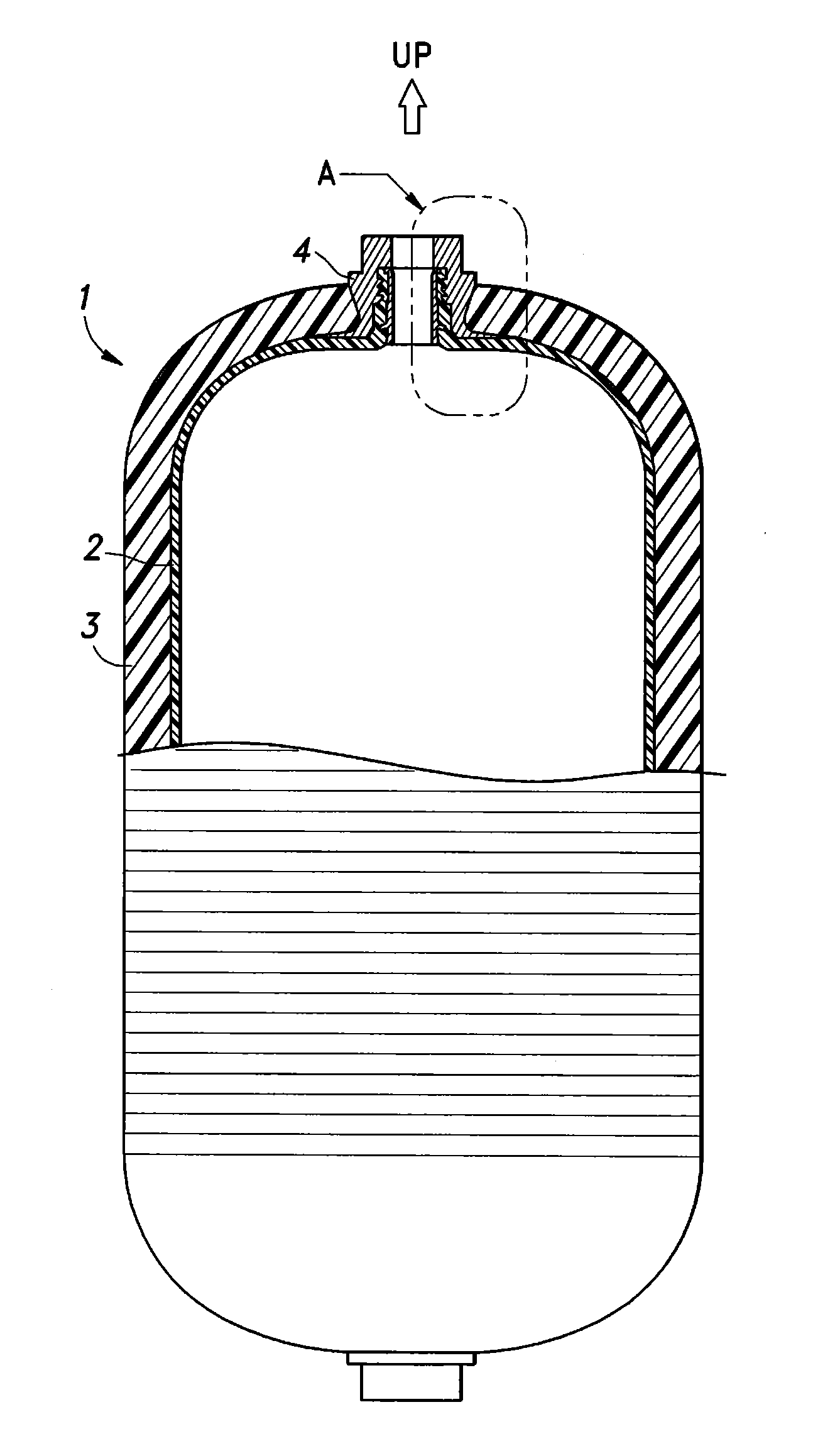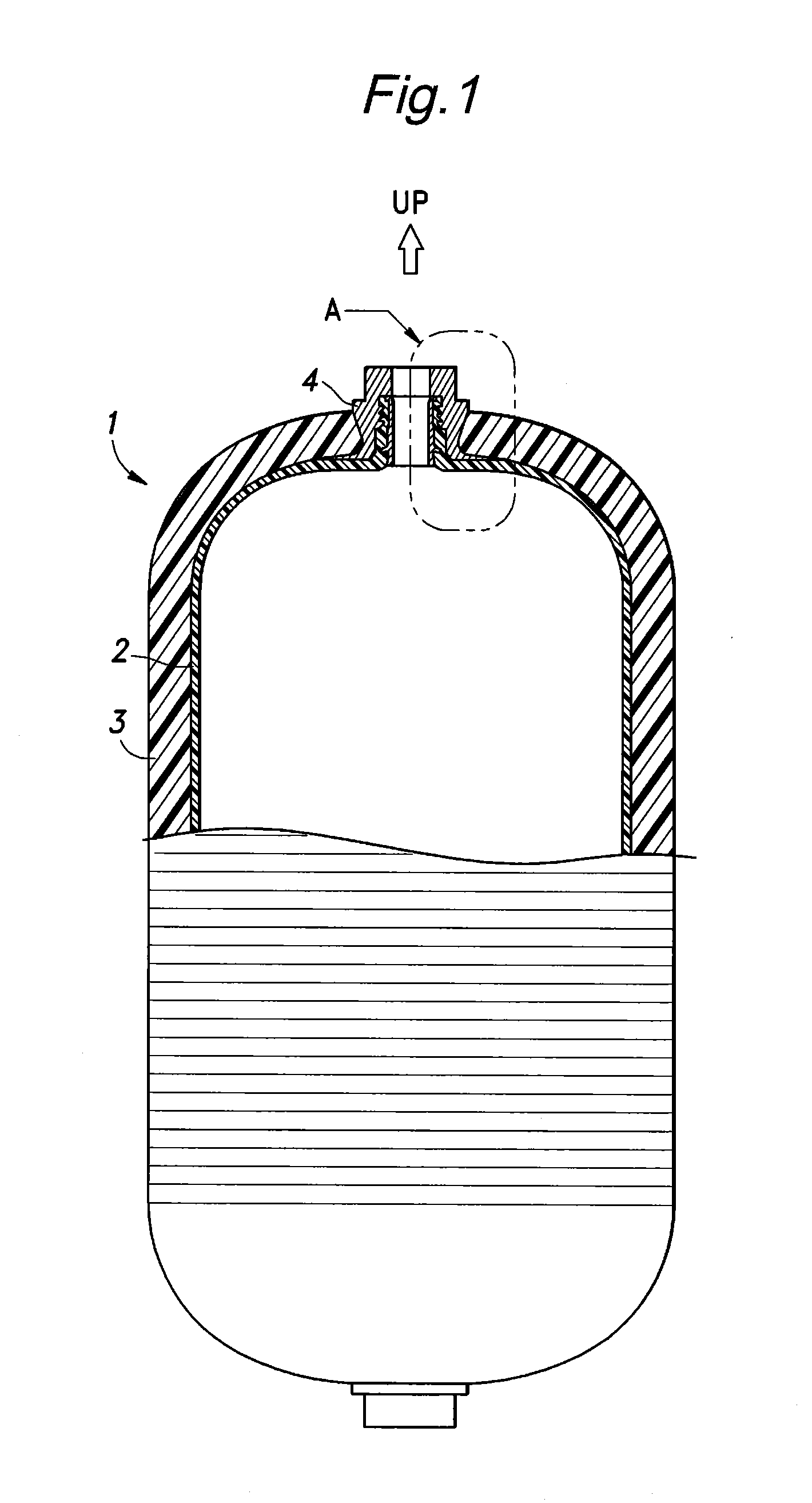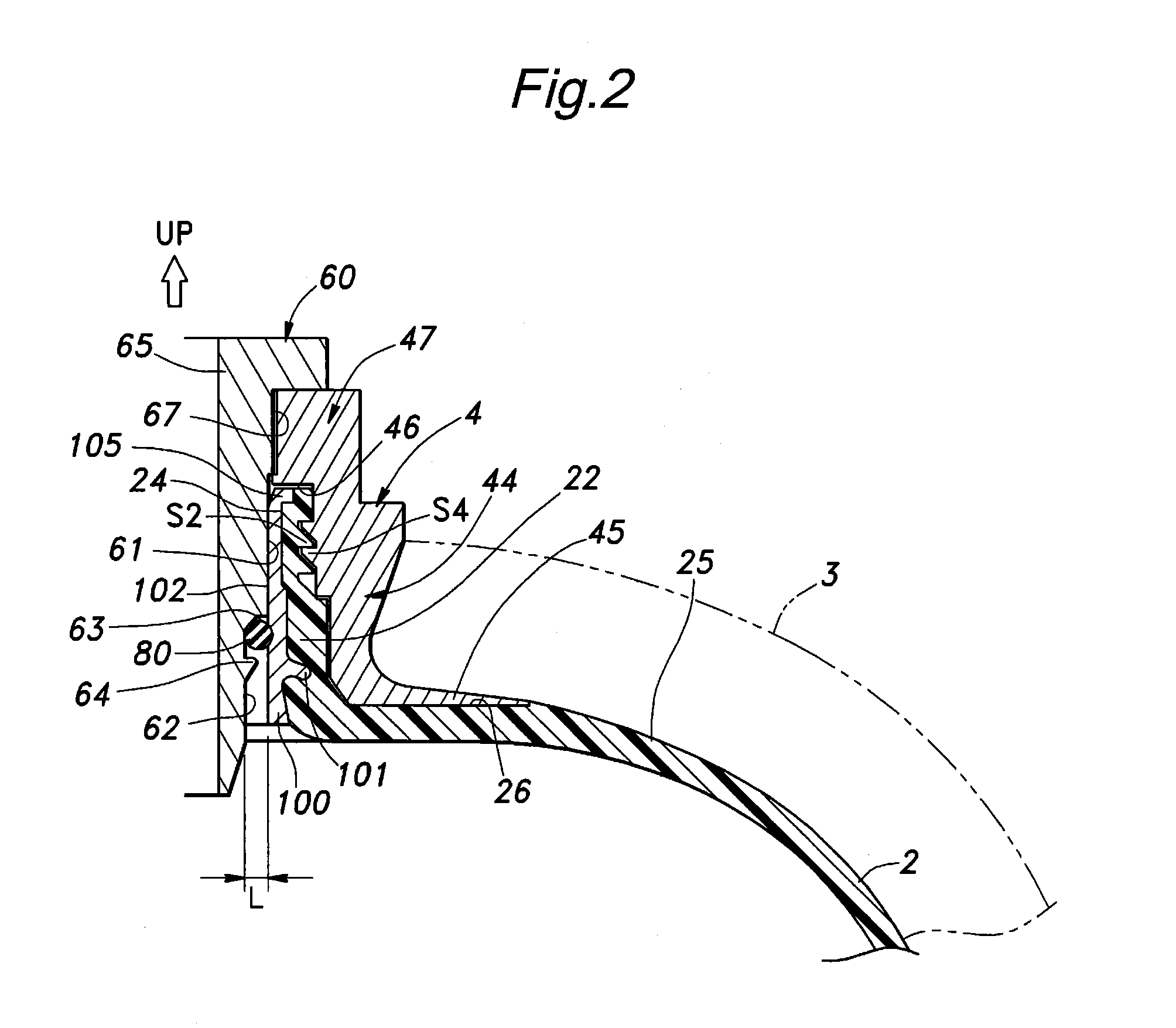Pressure vessel having improved sealing arrangement
- Summary
- Abstract
- Description
- Claims
- Application Information
AI Technical Summary
Benefits of technology
Problems solved by technology
Method used
Image
Examples
second embodiment
[0041]FIG. 3 shows the present invention. In FIG. 3, the parts corresponding to those of the previous embodiment are denoted with like numerals without repeating the description of such parts. In this embodiment, the external radial flange 105 provided in the upper end of the tubular member 200 substantially entirely overlies the upper axial end surface of the tubular extension 22. The annular shoulder 46 of the mouthpiece 4 may abut the upper end surface of the flanged end of the tubular member 200 in a similar way as in the previous embodiment, or an O-ring 81 may be interposed between the annular shoulder 46 and opposing end surface of the flanged end of the tubular member 200 as illustrated in FIG. 3. This O-ring 81 is particularly effective when the internal pressure of the pressure vessel 1 is relatively low, and the self-sealing function is not available.
first embodiment
[0042]The tubular member 200 is provided with a pair of annular projections 101 and 103 which protrude into the material of the tubular extension 22. Thereby, the self-sealing feature between the tubular member 200 and tubular extensions 22 and the mechanical attachment between them are even more enhanced. Also, an annular groove 104 is formed in one of the annular projections 103 on the side thereof facing the interior of the resin liner 2 for an improved mechanical attachment and sealing action between the tubular member 200 and tubular extension 22. Such an annular groove 104 may be formed in the single annular projection 101 of the
[0043]Thus, the second embodiment differs from the first embodiment in the modes of sealing (2) the Interface between the tubular member 200 and tubular extension 22 by using a pair of annular projections 101 and 103, and (3) the Interface between the annular shoulder surface 46 of the mouthpiece 4 and the combined end surface of the tubular member 100...
third embodiment
[0047]As a modification of the third embodiment, the tubular member 300 with or without the cover layer 107 may be fitted in the through hole 24 while applying a bonding agent in the interface 108. Any bonding agent may be used, but polyolefin bonding agents are preferred as they provide a favorable mechanical bonding strength and a required air tightness. An improved bonding strength may be achieved by first applying a primer on the surface of the tubular member 300 which is made of metallic material (or has a metallic surface) in this case, and then applying an epoxy bonding agent over the primer. Such an arrangement ensures a secure mechanical bonding between the tubular member 300 and tubular extension 22, and this ensures the sealing performance of the bonding agent. The bonding agent may also serve the purpose of accommodating the difference in the thermal expansion of the tubular member 300 and tubular extension 22.
PUM
| Property | Measurement | Unit |
|---|---|---|
| Diameter | aaaaa | aaaaa |
| Metallic bond | aaaaa | aaaaa |
Abstract
Description
Claims
Application Information
 Login to View More
Login to View More - R&D
- Intellectual Property
- Life Sciences
- Materials
- Tech Scout
- Unparalleled Data Quality
- Higher Quality Content
- 60% Fewer Hallucinations
Browse by: Latest US Patents, China's latest patents, Technical Efficacy Thesaurus, Application Domain, Technology Topic, Popular Technical Reports.
© 2025 PatSnap. All rights reserved.Legal|Privacy policy|Modern Slavery Act Transparency Statement|Sitemap|About US| Contact US: help@patsnap.com



